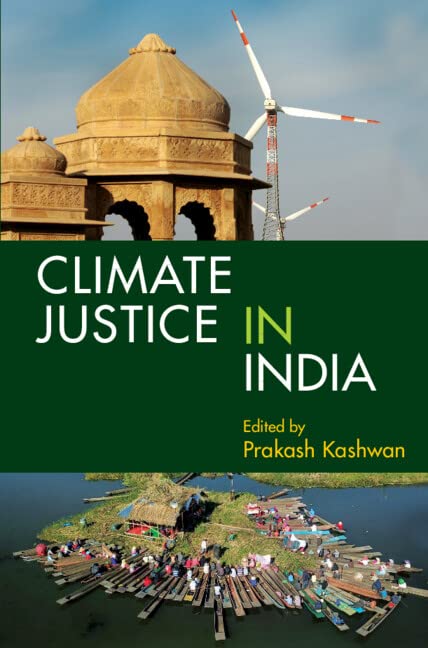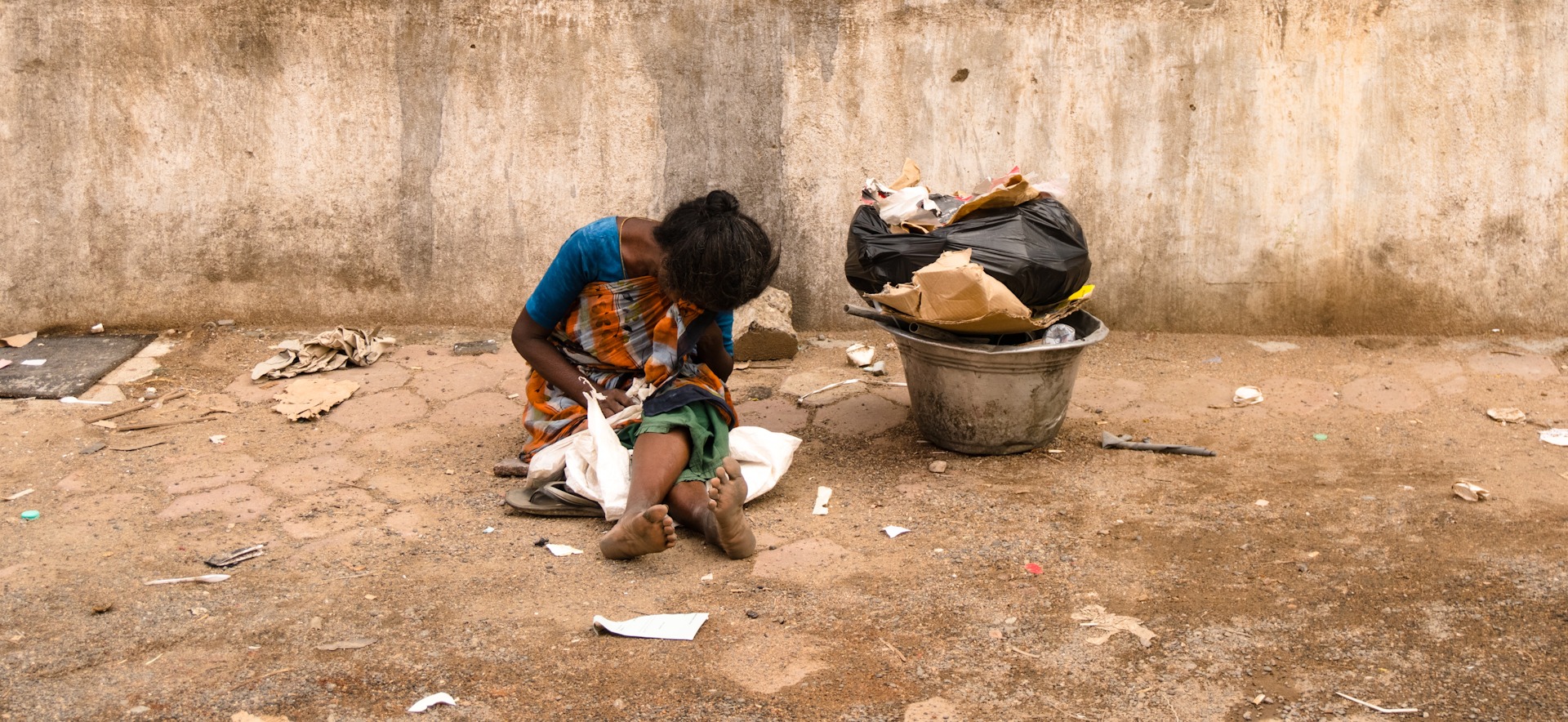Climate Action and Climate Justice in India
India’s ongoing climate action and transition to renewable energies is deeply intertwined with entrenched social, economic and political inequalities.

This article draws exclusively from Climate Justice in India (Cambridge: Cambridge University Press, 2023) edited by Prakash Kashwan. Access the book for more details related to references, bibliography and developments around the core arguments put forward here.
India’s arguments for international climate justice are well-rehearsed. The country has contributed 3% of the accumulated stock of greenhouse gas (GHG) emissions responsible for the current climate crisis. Various global indices rank India among most climate vulnerable countries, making it a legitimate claimant to a share of the loss and damage funds agreed upon at COP27 in Sharm el-Sheikh.
India’s claims may be a lower priority compared to smaller island states and more vulnerable countries, especially on the African continent. Irrespective of whether loss and damage funds are available to India, it must tackle climate impacts at home.
India is home to the largest population of poor people and is one of the most unequal countries in the world today. According to the World Inequality Report 2022, the wealthiest 1% of Indians own 33% of the wealth in the country, while the bottom 50% own a mere 5.9% of its wealth. The conjunction of extremely high climate vulnerability with extreme inequality makes India a hotspot of climate injustice, with tens of millions of people displaced by floods annually, and hundreds of deaths because of heatwaves and lightning.
The enormous disruptions to poor people’s lives due to disasters linked to climate change are hardly covered in the national press because Indian media lacks representation from socially and politically marginalized groups and classes. This may also be the reason why India has had very few debates on climate injustice brewing within the country; the press and large swaths of the climate advocacy community continue to focus on international injustices that India correctly emphasizes in international negotiations.
In Climate Justice in India, the contributors and I examine how India’s ongoing climate action efforts and energy transition intersects with deeply entrenched and multifaceted inequalities. Multilateral development agencies and international philanthropies have played a major role in the development of India’s urban climate adaptation, risk reduction and resilience-building efforts.
Eric Chu and Kavya Michael’s analysis of these developments show that despite Indian leaders identifying local development priorities as the main entry point for urban climate mitigation and adaptation, market actors often assume control of these opportunities, leading to the exclusion of much of India’s urban population.
The lower-middle class and income-poor urban residents that are often substantively excluded from urban climate plans also fuel India’s vast informal urban economies. Part of this exclusion has to do with the centralization of decision-making within urban local government bodies, as elected ward representatives and residents are rarely consulted in urban policy-making.
The lower-middle class and income-poor urban residents that are often substantively excluded from urban climate plans also fuel India’s vast informal urban economies.
The legacies of a centralized governance system also affect India’s much-anticipated transition to renewable energy. K. Rahul and Parth Bhatia examine 28 solar energy policies at the state level in India for their potential to create a more just and democratic electricity system. Their analysis shows that while policies do target some under-served communities, they fail to recognize their specific electricity needs, including a lack of integration across sectors, which is crucial for the transition to work for low-income neighborhoods.
More importantly, India’s current energy transition plans seek to replace the large and centralized legacy grid system, which risks reproducing existing inequities in India’s modern renewable energy infrastructure. Another important aspect of India’s just energy transition relates to an estimated 3.6 million people employed either directly or indirectly in the coal mining (80%) and power sectors (20%) in 159 districts in India.
Most people employed in the sector work under non-unionized, exploitative and environmentally-hazardous conditions that are commonplace in India’s coal industry. Vasudha Chhotray’s field research in Jharkhand and Chhattisgarh shows that in the Indian context, just transition requires challenging the well-entrenched political and economic regimes of coal extraction and engaging the local and regional social justice movements.

Various aspects of India’s just transition are shaped by the gross political and economic inequalities that have also shaped India’s emissions over the past 25 years. Haimanti Bhattacharya’s research shows that the relationship between carbon emissions from fossil fuels and inequality in consumption expenditures at the state level has undergone a major transformation since the onset of the economic reforms following 1991.
While higher-level consumption inequality at the state level meant lower emissions in the pre-1991 period, now the most unequal states are among the largest emitters.
This suggests that hotspots of inequality coincide with high emissions areas, with the poorest people suffering the worst consequences of air and water pollution. These findings imply that instead of seeing economic development and climate mitigation as conflicting goals, the pursuit of more inclusive economic development is intrinsically connected to climate justice. Approaches that include tactics like carbon taxes targeted at the wealthiest population would advance both climate action and climate justice.
Hotspots of inequality coincide with high emissions areas, with the poorest people suffering the worst consequences of air and water pollution.
Arpitha Kodiveri and Rishiraj researched India’s national and state climate action plans to investigate how they incorporate considerations of social justice via a discussion of economic inequality, class, caste, tribe and gender. Even though the national and state climate action plans acknowledge socially rooted vulnerabilities, they fail to incorporate any substantive strategies to address these intersectional vulnerabilities.
Addressing caste, gender, ethnicity and religious inequalities will be crucial in responding to the climate crisis. Vaishnavi Behl and Prakash Kashwan show how the intersections of gender, caste and class-based inequalities shape access to clean drinking water in the Garhwal Himalayas and Gujarat. They show that these are not just deeply embedded socio-cultural features, but they permeate climate adaptation and resilience interventions implemented by multilateral donor agencies and well-known non-governmental organizations (NGOs).
The climate crisis is exacerbating grave inequalities in the access to basic amenities, such as clean drinking water, sanitation and the burden of an extremely poor sanitation infrastructure borne by India’s Dalits – the ‘low caste’ communities that make up almost all of India’s poorly paid and ill-equipped sanitation workers. Hundreds die every year because of the toxic fumes sanitation workers inhale while manually unclogging and cleaning the sewer holes.
Considering the wide-ranging effects of caste-based oppressions, Srilata Sirkar issues a call to emphasize caste justice in India’s climate action. Echoing similar demands about attending to questions of racial justice in the United States and building on recent work conducted in India, Sirkar asserts that caste justice is climate justice and India’s climate movement needs to be an anti-caste movement. Such a vision offers an important point of departure for redrawing India’s policies, programs and strategies that are sorely lacking in advocating for the rights of women, minorities, indigenous peoples and the poor.
Caste justice is climate justice and India’s climate movement needs to be an anti-caste movement.
India’s youth climate movement has begun to shine light on these inequalities, especially via their advocacy for the rights of Adivasis and other marginalized groups that are intimately connected to India’s recent weakening of its environmental regulatory framework. Yet, as Kashwan’s analysis of three of the most prominent Indian environmental movements – the Silent Valley, Chipko (Hug The Trees), and Narmada Bachao (Save River Narmada) – shows, today’s youth leaders will need to actively guard against the middle-class dominance of India’s nascent climate movement.
Some state governments are taking specific measures to address these inequalities. Ashlesha Khadse and Kavita Srinivasan apply the lens of intersectional agrarian justice to analyze the state-level policy and programmatic initiatives meant to promote agroecology, with an emphasis on securing women farmers’ land rights in the states of Tamil Nadu and Kerala.
These interventions show that a hybrid approach that integrates the goal of securing women’s land rights with the state-led efforts to promote agroecology interventions promises to advance women’s empowerment, food sovereignty and the broader goals of climate action and climate justice in India. New research shows that by 2030, an estimated 160 to 200 million Indians could be exposed to a lethal heat waves every year, and more than 30 million Indians could face job losses due to increased heat stresses.
Under these conditions, climate justice will emerge as the single most important concern for India’s policy-makers. New cooling infrastructure may be necessary, but will not be sufficient. Building new systems of public consultation and governance holds the key to the success of Indian efforts to address the climate crisis.
